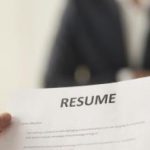After a job interview, it’s only natural to want an update on the hiring process, particularly if you feel it went well. However, there are several potential pitfalls to avoid when sending a follow-up email after the interview. If you come across as pushy, sloppy or too informal then you could damage your chances of landing the job.
Choose the right time to send a follow-up email
Leave time for the dust to settle. There’s a good chance your interviewer is speaking to other candidates, so there’s little to be gained from contacting them on the day. Wait a few days before sending that all-important follow-up.
Tone of voice
Regardless of the tone of your interview, keep your follow-up professional and courteous. This isn’t the time for humorous self-deprecation. Be clear about the purpose of your message. Presumably you’re simply looking for an update on the recruitment process, so get to the point and don’t waste time and words on unnecessary small talk.
What to include in your follow-up email
It’s important to be disciplined when sending your follow-up email. Follow this guide for a simple, professional message that gives you the best chance of receiving a response.
Subject line
There is no need to spend hours deliberating over a snappy subject line. The most effective approach that is likely to get your message opened quickly, is to respond to the most recent email between you and the interviewer or HR manager. If this isn’t possible (e.g. if you’ve always communicated via a recruiter, rather than directly with the interviewer) simply include your name, the date and time of the interview.
Introduction
If you’re on first-name terms with the person you’re contacting – you may have exchanged multiple emails and spoken face to face by this point, then it is fine to open your follow-up email by using their first name. If not, or if you’re unsure, stick with their title and surname (i.e. Mr. / Ms. Jones).
Body text
Keep it simple. Presumably, the main reason you’re emailing is for a progress update – the interviewer will know this before they’ve even opened your message. Be polite but direct:
Thank them for their time in the interview.
Explain that you’re following up on your interview – remember to be specific about the job, mentioning the job title and interview date.
Restate your interest in the position and say you’re keen to hear about next steps.
Ask for a progress update, explaining that any information they can provide would be greatly appreciated.
Signing off
Having made your point in the main body of your follow-up email, sign off by inviting your interviewer to ask any additional questions. Close with a simple “looking forward to hearing from you”, then a “thank you” followed by your full name.
Final checks
As obvious as it sounds, don’t forget to read over your follow-up email before sending. Ensure it’s well spaced, correctly punctuated and free of typos. Running it through a spellchecker should help.
Alternatives to sending a follow-up email
Email may not be the best medium for following up, particularly if you haven’t communicated with the interviewer via email before. Depending on the job you’re applying for, some, or all of these alternatives may be more appropriate; An instant messaging platform (e.g. Google Hangouts, Skype, LinkedIn Messenger), LinkedIn, Phone call, or WhatsApp.


